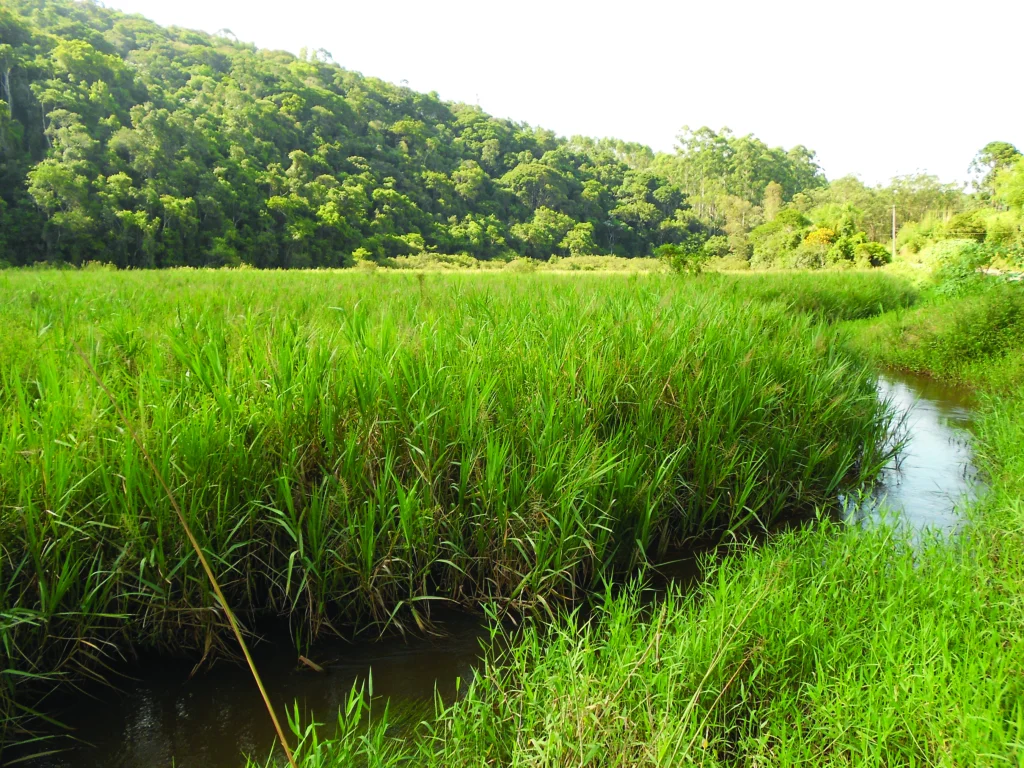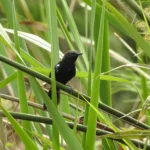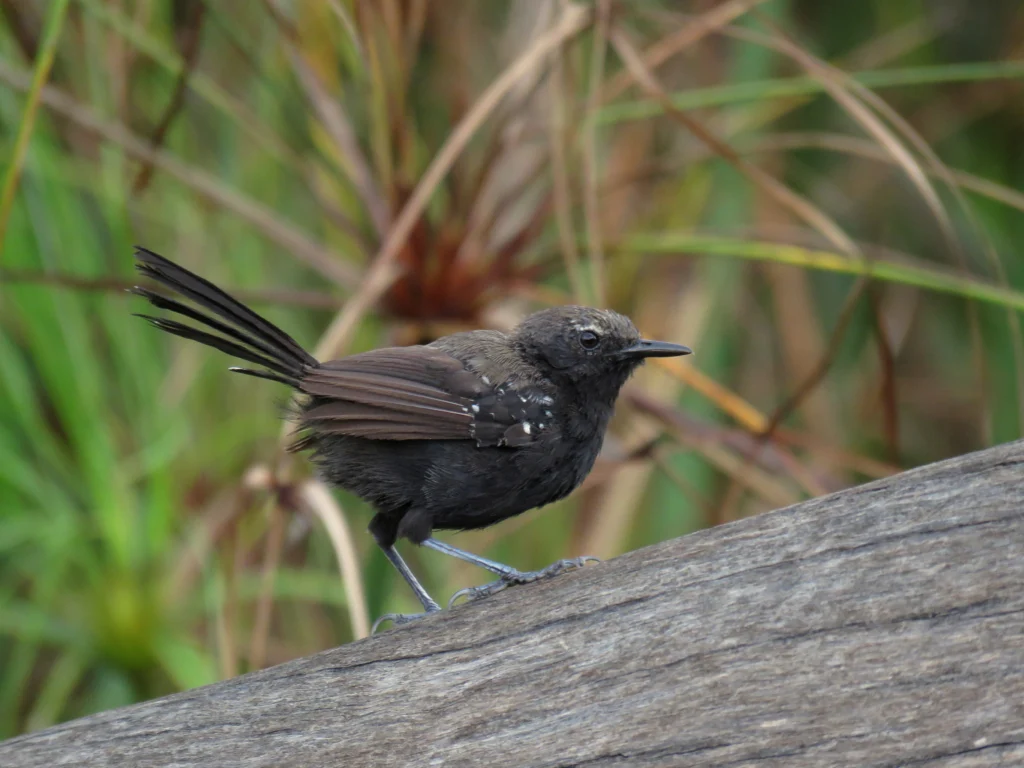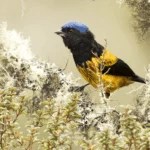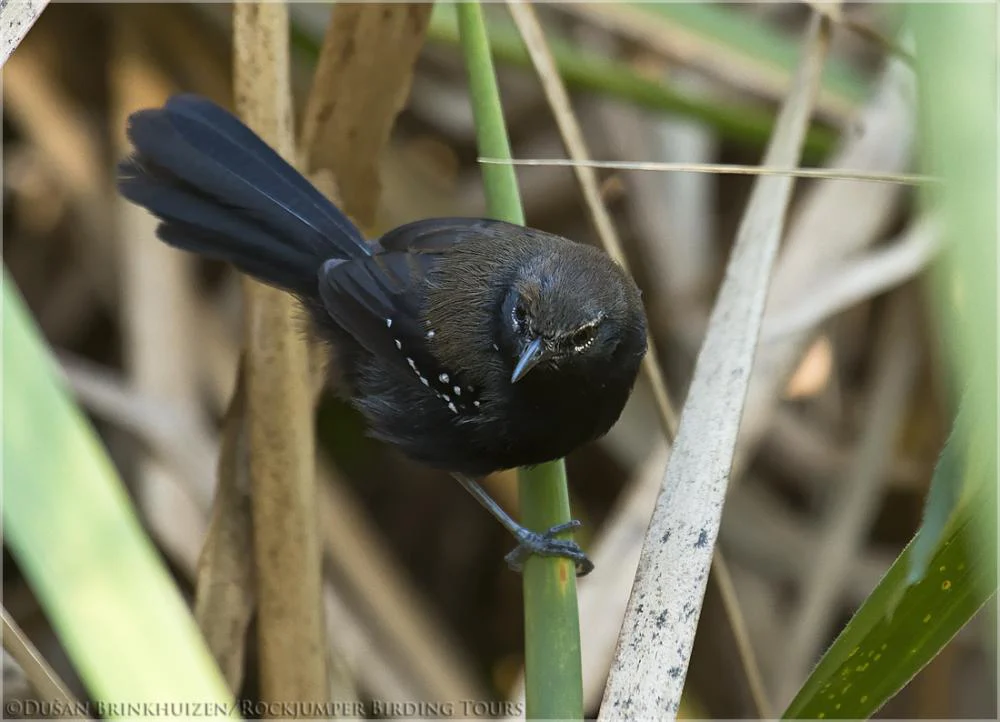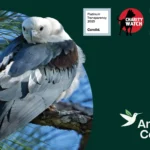
Overview
About
Although most members of the Neotropical antbird family inhabit dense tropical forests, the small Marsh Antwren, endemic to the east coast of Brazil, is an exception. This unique antwren can only be found in coastal marshes, swamps, and wet grasslands, a habitat association which gives the bird its name.
Two subspecies of the Marsh Antwren are recognized: the more northern population, sometimes called the São Paulo Marsh Antwren, is under particular threat of habitat loss because of its proximity to a booming urban population. This subspecies is considered Critically Endangered.
Like many other coastal bird species ranging from the Snowy Plover to the Saltmarsh Sparrow, the Marsh Antwren faces ever-increasing competition from humankind.
Threats
Birds around the world are declining, and many of them, like the Marsh Antwren, occur in restricted ranges. Their limited distribution is even more affected by the cumulative impacts of threats like habitat loss and invasive species.
Habitat Loss
The biggest threat to the Marsh Antwren is habitat loss due to a number of human pressures, including settlement, agricultural clearing, aquaculture, sand mining, livestock grazing, and road building.
Cats & Invasive Species
The Marsh Antwren’s habitats have been degraded by the encroachment of a number of invasive grass species. These grasses and other invasives, such as the ginger lily, crowd out native plants, making the habitat unlivable for this bird.
Pesticides & Toxins
Oil leaks and spills have affected some subpopulations of Marsh Antwren, and additional populations could be impacted by future oil spills.
Climate Change
Rising sea levels are a grave threat to the Marsh Antwren — climate change models predict a 60 percent loss of its coastal habitats.
Conservation Strategies & Projects
Birds need our help to overcome the threats they face. At ABC, we’re inspired by the wonder of birds and driven by our responsibility to find solutions to meet their greatest challenges. With science as our foundation, and with inclusion and partnership at the heart of all we do, we take bold action for birds across the Americas.
Creating & Maintaining Reserves
Habitat is the foundation for birds’ survival, and for range-restricted species like the Marsh Antwren, protecting what remains of their limited habitat is essential. In October 2019, the southeastern Brazilian municipality of Guararema, along with ABC partners SAVE Brasil and Guaranature, established the 5,860-acre Bicundinho Wildlife Refuge to protect the Marsh Antwren’s habitat. Partners working in Brazil are establishing conservation management plans for the antwren, and identifying opportunities to conserve additional habitat.
Avoiding Pesticides & Tocins
ABC provides a number of resources to address the issue of pesticides and birds, from avoiding the use of neonicotinoid insecticides to identifying the most injurious pesticides used in agriculture.
Bird Gallery
The Marsh Antwren is between five and six inches long, roughly the size of a Carolina Wren. It has a relatively long tail and long, thin bill. The male is darker than the female, typically a mixture of blacks, grays, and browns, depending on the subspecies. The female is a streaky mixture of brown, buff, and white. Both sexes have black wings with small white tips on the scapulars (shoulder feathers).

Bird Sounds
The Marsh Antwren’s loud song consists of rapidly repeated double-note phrases; its call is an abrupt, repeated single note.
Eduardo Patrial, XC20817. Accessible at www.xeno-canto.org/20817.
Douglas Meyer, XC787760. Accessible at www.xeno-canto.org/787760.
Peter Boesman, XC230128. Accessible at www.xeno-canto.org/230128.
Habitats of the Marsh Antwren
Found in shoreline marshes below 2,500 feet, the Marsh Antwren favors marshlands dominated by native cattails, sedges, and flowering plants.
- Inhabits marshes alongside rivers, lakes, and the ocean
- Also found in seasonally flooded grasslands and mangrove swamps

Range & Region
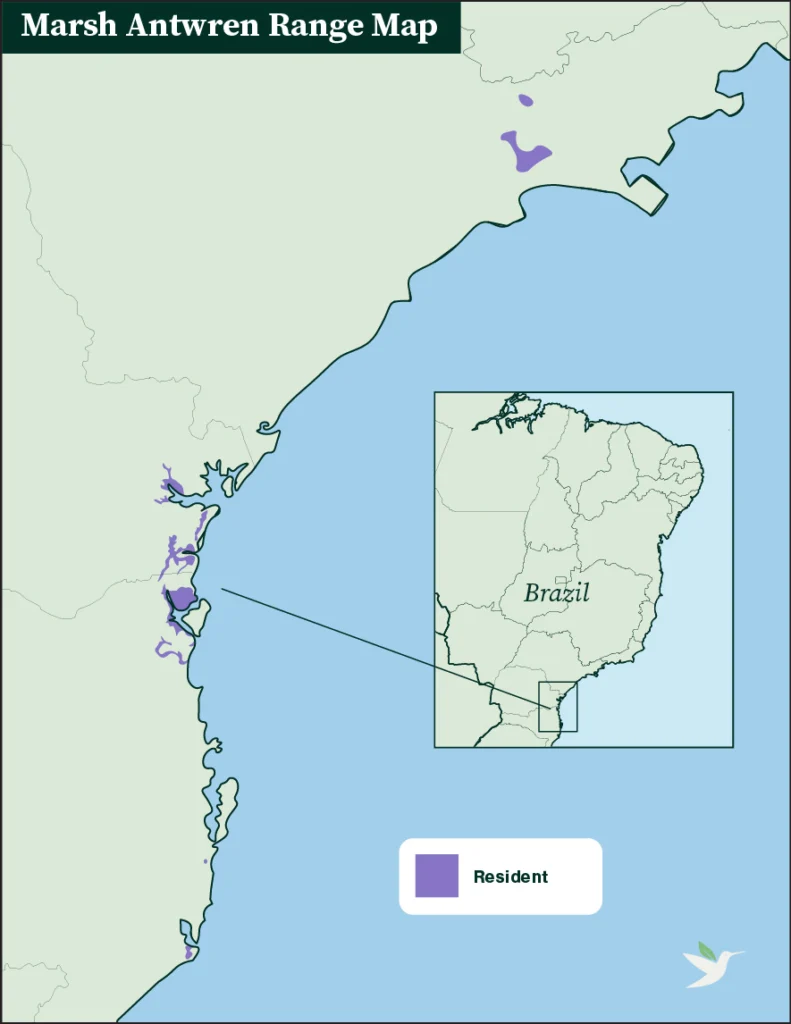
Specific Area
Southeastern Brazil
Range Detail
The Marsh Antwren occurs in two disjunct populations in southeastern Brazil: the first in São Paulo and the other farther south, from Paraná south to Rio Grande do Sul.
Did you know?
The northern subspecies of Marsh Antwren was once considered a full species known as the São Paulo Antwren. This subspecies is considered Critically Endangered.
Life History
The Marsh Antwren is highly secretive and typically stays hidden within marsh vegetation, only reluctantly flying from cover in short, quick dashes. It is usually seen in pairs or small family groups.
This bird’s breeding season varies by subspecies, with the more southerly subspecies (acutirostris) breeding over a longer period from August to February, and the more northern (paludicola) nesting from October to February.
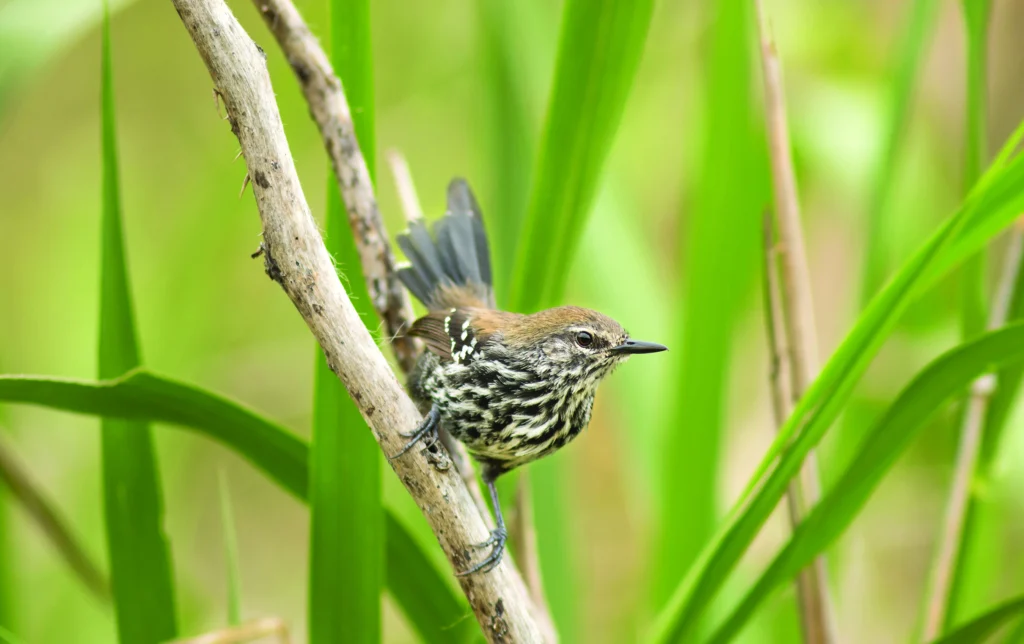
Diet
The Marsh Antwren actively forages within the cover of dense marsh vegetation for insects such as mosquitoes and caterpillars. It usually stays close to the ground, using a variety of feeding strategies including gleaning from a perch, bill-stabbing, and making short lunges towards prey. It sometimes makes short flights to pluck prey from beneath overhanging vegetation.
Courtship
The Marsh Antwren is typically monogamous, with both sexes defending a territory throughout the year. Pairs usually stick close together, communicating in short, soft calls.
Nesting
A Marsh Antwren pair chooses a nest site within tall, dense vegetation and with suitable water levels. There, the pair builds a cup-shaped nest of dried plant fibers, straw, and leaf fragments, bound together by spider silk and anchored to surrounding reeds and grasses, usually close to the ground.
Eggs & Young
The female Marsh Antwren lays a clutch of two white, brown-spotted eggs. She and her mate take turns incubating, likely for a period of 14 to 20 days. Although specifics on the hatching and care of the young remain undescribed in the Marsh Antwren, other members of the antbird family share feeding duties after the young hatch, and the chicks leave the nest after approximately two weeks. The fledglings remain nearby and are fed by their parents for some time afterwards. Juvenile Marsh Antwrens may remain in their parents’ territory until the following breeding season.
